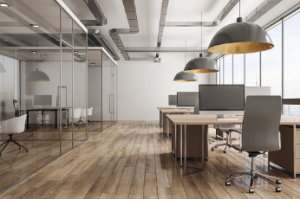The Different Types of Office Fit Outs
If you’re looking for new ways to improve employee performance and satisfaction, you may be considering office fit outs. A comfortable work environment can increase employee productivity and help reduce workforce turnover. The right office fit out can also boost your brand – happy employees are likely to be better brand ambassadors! These are just a few of the many benefits of a new office fit out. Here are some ideas that will help you make the most of your office fit out.
 There are different categories of office fit outs. These are called Cat A, Cat B, and Category C. They are each different, and the landlord’s requirements might vary slightly. Listed below are the most common office fit outs. To understand the different categories, read on. Listed below are the benefits and disadvantages of each type. You can use the information to make the right decision for your business. The office fit outs are not just for offices; they’re also an investment for your business.
There are different categories of office fit outs. These are called Cat A, Cat B, and Category C. They are each different, and the landlord’s requirements might vary slightly. Listed below are the most common office fit outs. To understand the different categories, read on. Listed below are the benefits and disadvantages of each type. You can use the information to make the right decision for your business. The office fit outs are not just for offices; they’re also an investment for your business.
Category A fit-out
Office fit-outs fall under the category of CAT A. They are generally undertaken by landlords, developers or institutional investors. The primary objective of category A fit-outs is to prepare the building for its end-user client. This end-user will design a bespoke workplace solution, working with its design partner. Often, commercial office fit outs SA will overlap with CAT A projects. For example, a space may be transformed into a functional meeting room or a cosy breakout area.
Category B fit-out
When renovating an office, you can consider doing a Category B office fit outs or a renovation if you want to make major interior changes. These renovations deal with the structural aspects of the building, which are not as visible as the cosmetic ones. During Category B fit-outs, a tenant may perform certain sensitive category A works, which are less likely to be damaged. The developer will reimburse you for this work, but not the full amount.
Category C fit-out
CAT B office fit-outs are commissioned by the tenants moving into a new space. Depending on the project’s scope, they may consist of refurbishing an existing space or converting an empty CAT A space. Cat B fit-outs typically include floor finishes, ceiling treatments, wall finishes, internal doors, and AV and cabling installations. Whether a CAT B office fit-out involves the creation of new spaces or refurbishing an existing space, it can be either elaborate or basic.
Category D fit-out
There are two major office fit outs: Category A and Category D. The first category involves shell and core construction. The latter involves the interior of an existing building, which may include furniture and fittings. A tenant may opt to contribute to the costs of technological improvements, thereby saving both time and money. Tenants may opt to carry out certain category A work during a Category B fit-out, as they will be less likely to cause damage.
Category E fit-out
Office fit-outs usually fall into one of two categories, category A or category B. The former covers the basics, such as basic structural elements and electrical distribution. On the other hand, the latter covers the finishing touches, such as wall coverings, carpeting, lighting, and meeting and conference rooms. Landlords typically carry out category A office fit-outs, while businesses can choose either option. These two categories share some important similarities, though.
Category F fit-out
The construction of an office fit out can be of two types. A category A fit-out covers basic electrical and mechanical installations, including air conditioning and lighting systems. A category B fit-out is more extensive and includes the installation of partitions, lighting systems, and other interior fixtures. It also covers interior decorating, including the layout of meeting rooms and the pantry. In addition, this type of fit-out includes the installation of blinds and curtains and other finishes.
Category I fit-out
Typical categories of office fit-outs include Category A, B, and C. The former refers to the basic landlord fit out. This type of fit-out includes the basic electrical and mechanical services and fire systems, bathrooms, and raised access facilities. Other elements in category A office fit-outs include plumbing fixtures, internal surface finishes, fitted lights, and blinds. First, however, it is important to note the differences between these three categories.


